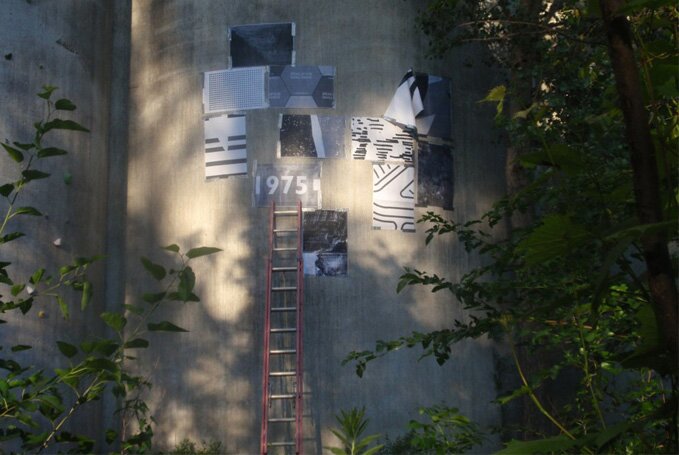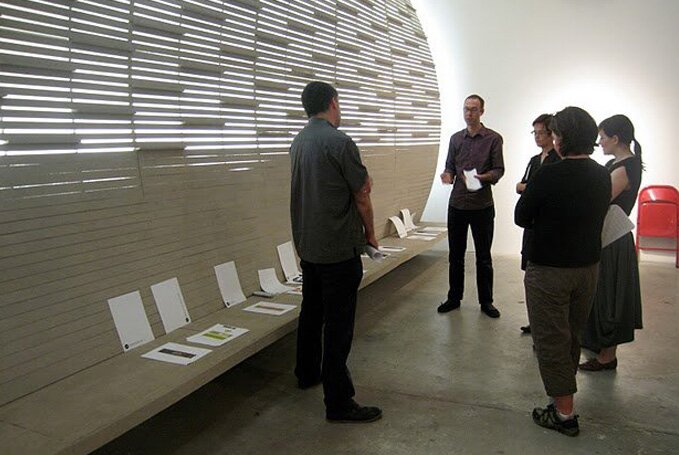On May 22, only 5 days after the deadline for entries, the Stored Potential jury convened in the back gallery at The Bemis Center for Contemporary Arts. For 4 jurors, the task seemed simple: choose 14-images for print at 20′x80′ to temporarily re-clad the concrete silos comprising a vacant elevator near Omaha’s downtown. The morning began with a site visit to provide a physical understanding of the massiveness of the project; creating and displaying images at this scale, for the whole world to see, and possibly even NASA satellites, is not a flippant act. With no precedent as reference, they approached the diverse proposals to work through a course of action.
Corn. There was lots of it. Enough that Mason White was repeatedly heard saying: “oh don’t you worry, there will be corn.” Discussion was focused on the varied representation of the plant Zea mays and how it is central in the thought of even artists and designers. It is the mascot of Nebraska. The jury leaned towards entries that went a step further than the literal cob or kernel, narrowing them down to a corn in husk re-imaged as barcode when scanned by a mobile phone will direct the user to a website listing all its byproducts, corn as an artistic compilation of parallel lines – a metaphor for the fields that bear the crop, and corn kernels as farmer crowdsourcing to paint the final banner.
Concept. How a central guiding idea is conceived, represented, and executed. The jurors discussed the importance of a concept that guides the packaging of a submission and also relates directly to the overall project – land use, agriculture, and food. Juror Jeff Day made suggestions how strong entries could become stronger by refining the written description or even adding one more image to further explain the designers process or link it more directly to the overall project initiative. In general, the more the jury was informed about the genesis and development of the idea, the longer it remained on the boards. One such idea superimposed a well head and below ground well from Western Nebraska onto a silo using the height of the concrete structure to measure the depleting levels of the Ogallala Aquifer. Another employed a series of diminishing black dots represented in various perspectives and 3D models to create the illusion of an hourglass, or pinched, silo. And a third conceptual entry positioned land use as another type of ‘production’ with an aerial sliver of Omaha where agriculture meets a developing parcel meets a fully developed one by reinterpreting the transition as a colorful composition of lines.
Scales. The jury quickly declared the importance of images that convey meaning at numerous physical scales. Juror Jamie Hand asked interesting questions regarding scale: What is the perspective from a passing vehicle at 70mph versus a visit to the site? Will the image at the larger scale lead someone to visit the site to learn more? What about the play on scale of the image itself such as a pastel drawing of a rusty hand cultivator that at this scale and next to the interstate becomes almost infrastructural itself. And what about numerous scales of thought? Is it exactly what a viewer sees, or is there more behind the image such as re-purposing the banner post-exhibition as political action, reforming into usable objects? Juror JD Hutton made an apt metaphor about ‘harvesting the banners’ that was proposed by one submission that created a land patterned quilt of hexagons, each containing tiny print “Speak Up for Small Farms”. After the exhibition, the hexagons will be cut out and mailed to all U.S. Senators and Representatives by a regional group of small farmers.
Lawsuit. Avoiding lawsuits for Emerging Terrain was an important consideration. Did the artist credit the image used? Copyrighted fonts, copyrighted ideas, copyrighted images – they were present throughout the submissions.
Composition. How do the images work with one another as a composite facade? This became the most difficult part of the day as images were arranged, rearranged, and rearranged again on a printout of the elevator. It was here that the jury’s ‘personality’ became apparent: patterns and viewer interaction. And, pop art: a large piece of bacon with a small ‘AMEN’ written below that Mason White declared as “out-Warholing” another submission that directly referenced Warhol, and a graphic pop art interpretation of elevator Drive Sheds. Finally, a submission that fits no category other than purely beautiful: a crayon drawing of Tomatoes neatly cropped to the proportions of the silo and the simplest of concept statements by a 10-year old who lives near the elevator.
Conclusion. The jury chose 14 submissions to be short-listed for the next stage that requires developing a portion of the image at full-print scale for a mock up to test how it will read on the elevator. Several images that were not short-listed were recommended differently than intended – one is being commissioned as the menu for the epic dinner.
Each submission received contributed tremendously to the enthusiasm of the project. Thank you to everyone who generously participated by creating.
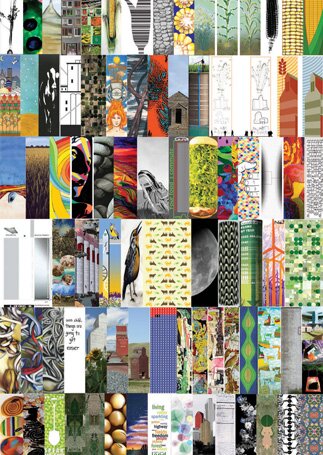
Contributors to above composite (in no particular order): Ashley Johnson, Julie Bogdanowicz, Aaron Cohen, DeOld Andersen Architecture, Brian Stromquist, Seth Taras, Ben Raines, Mary Zicafoose, Les Bruning, M. Brady Clark, Craig Lee, Tom Prinz, Richard Brock, Joey Lynch, Elle Lien, Jordan Geiger, Will Quintana, Gerard Lange, Peg Reinecke, Gary Jameson, Leslie Parker, Cleo Buster, Jamie Thiessen, Joseph Broghammer, Jeremy Reding, Mary Day, Irena Piechota, Joy Taylor, Andreas Symietz, Tory Burke, Amber Eve Anderson, Linda Koutsky, Sheung-Yi Ng, Joe Pankowski, MJ Rezac, Matthew Bissen, Jacob Hoppe, Scott Keyes, Emily Mechesney, Cathy Solarana, Doris Rowe, Michel Mason, William Holland, Skye Hawkins, Mitchell Gelber, Cecilia Lueza, Tim Lewis, Jean Mason, Alex Jochim, Krista Hulshof, Brittan Rosedahl, The Office of PlayLab Inc., Robert Trempe, Kevin Penrod, Blair Guppy, Darlene Montgomery, Greg Johnson, Christine Cortina, Bemis Press, Todd Gilens, Chris Shelley, Shaun Smakal, Matthew Farley, Mike Giron, Cat DeBuse, Kim Reid Kuhn, Kristin Pluhacek, Michael Alstad, Leah Lazariuk, Luisa Caldwell, Cat and Ray Dalupang, SLO Architecture, Leigh Merrill, Kaleen Enke, Ben Ruswick, Brian Kelly, Deb McColley, Rodney Rahl, William Watson, Adelina Castro, Derrick Presnall, Darci Presnall, Jennie Wilson, Joshua Serck, Cait Irwin, Katharine Rapkin, Tinca Joyner, Nicholas Pella, Emily Nemens, Lea Schuster, Safora Khoylou, Jennifer Eurell, Art Garcia
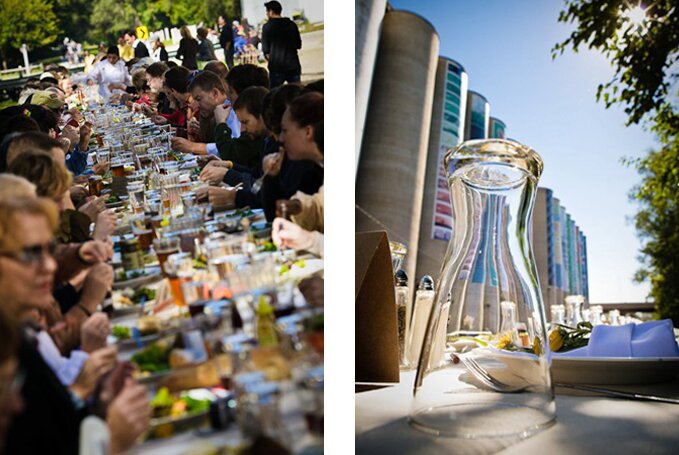
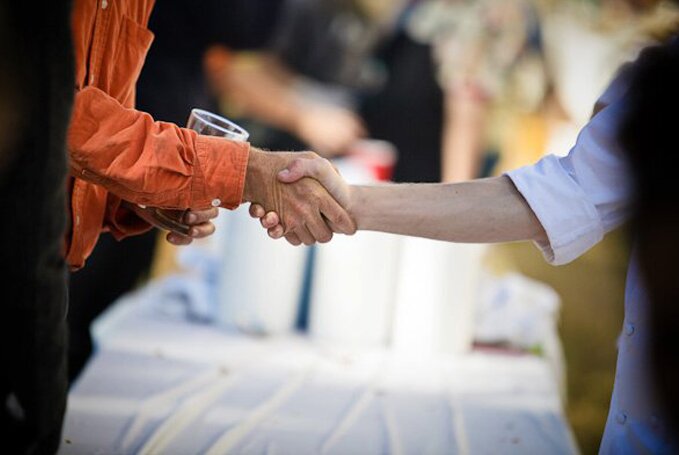
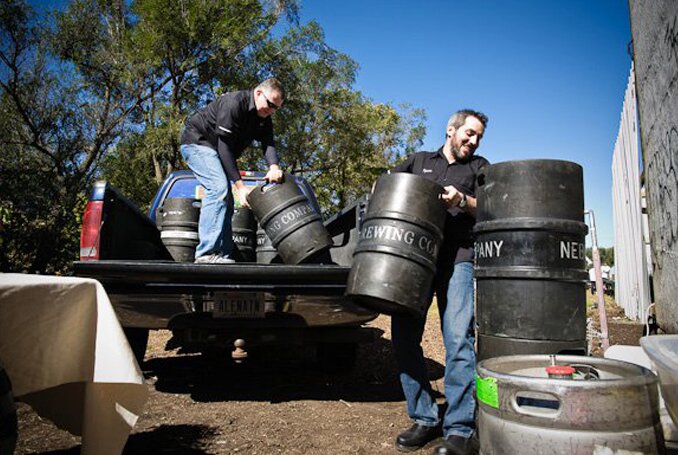
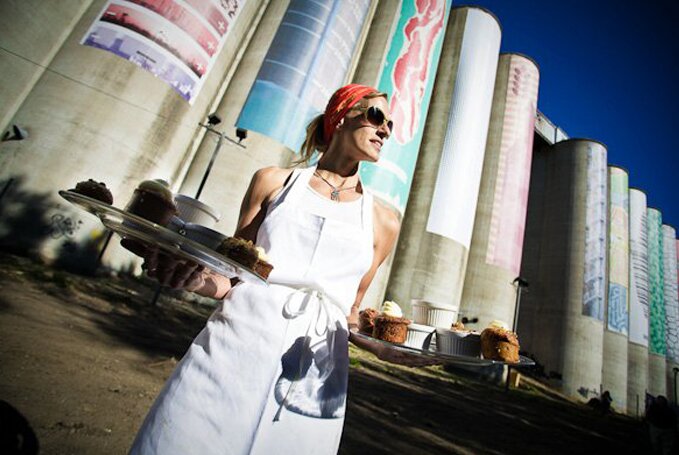
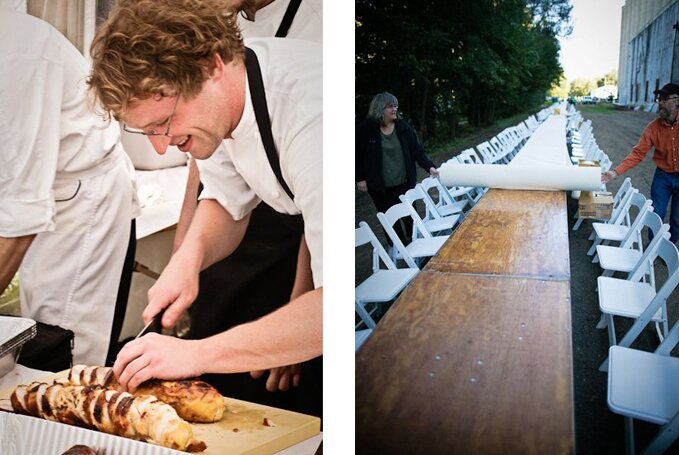
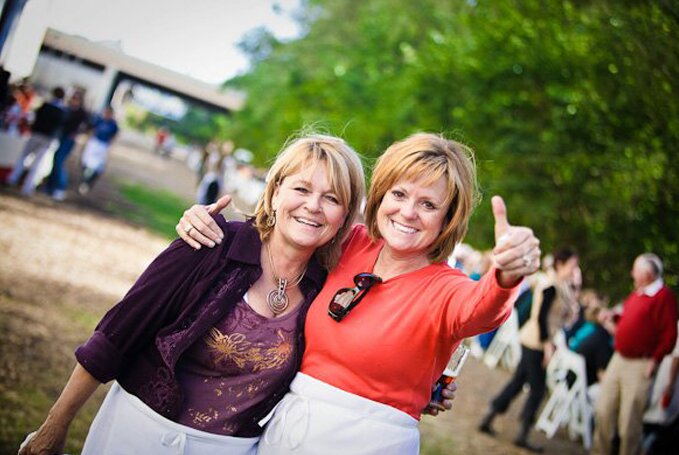
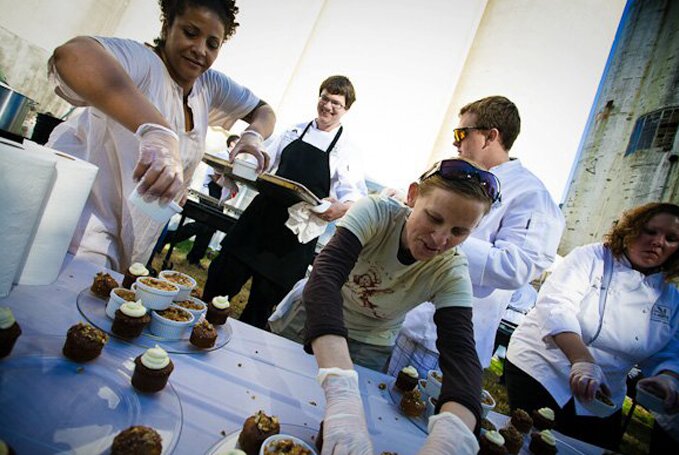
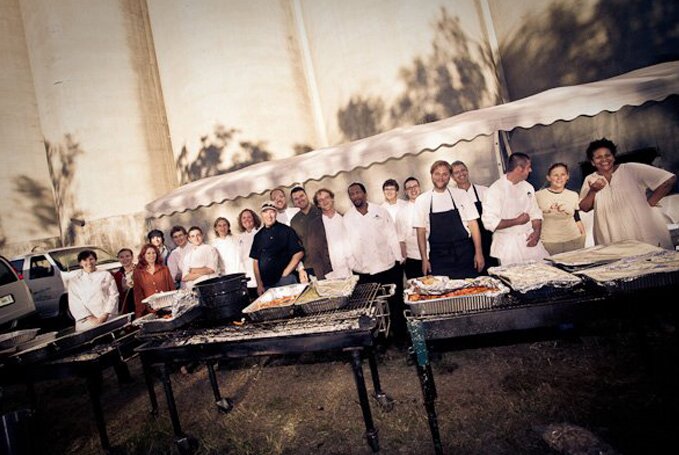
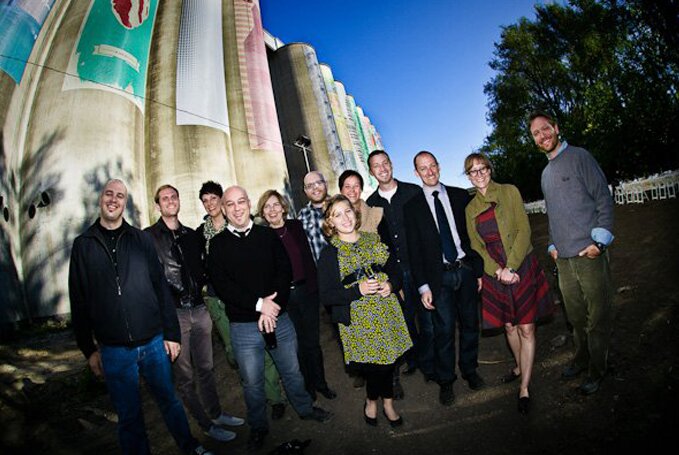
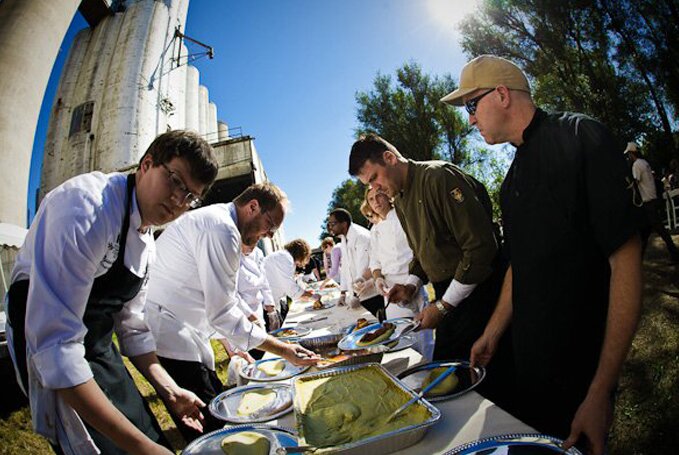
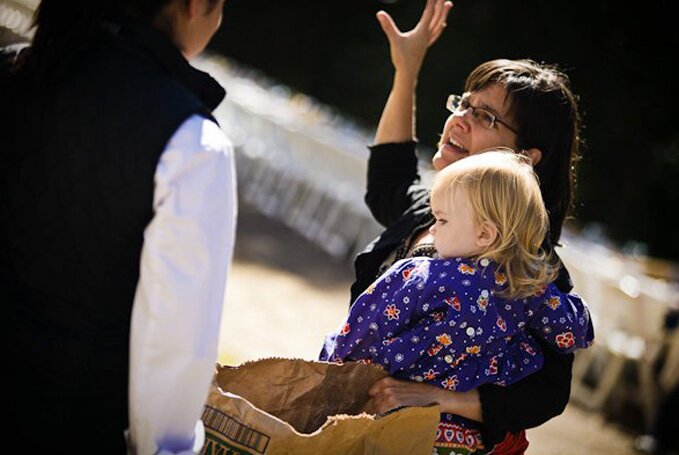
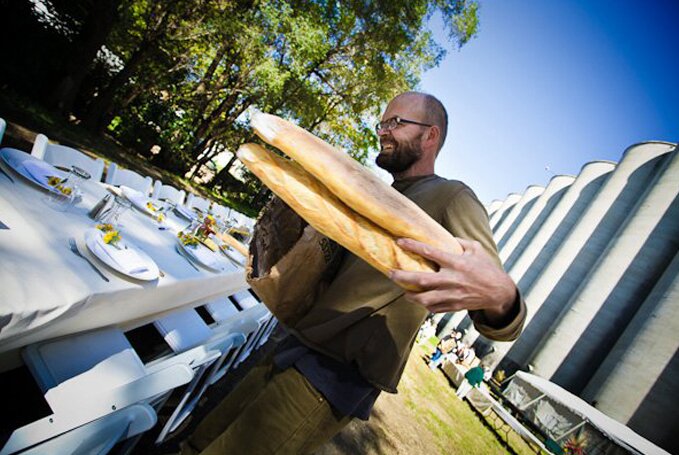
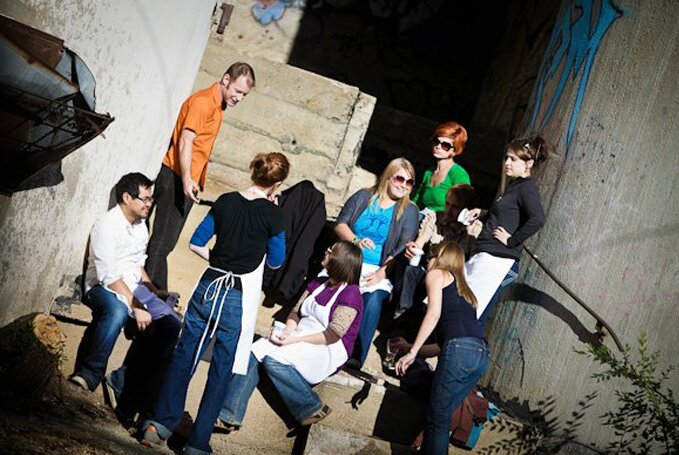
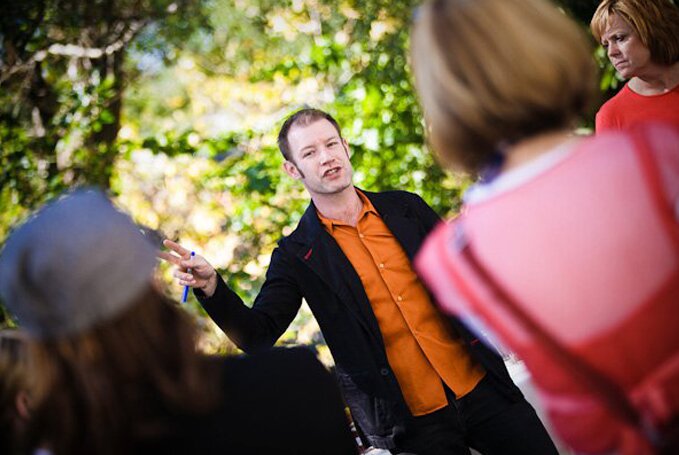
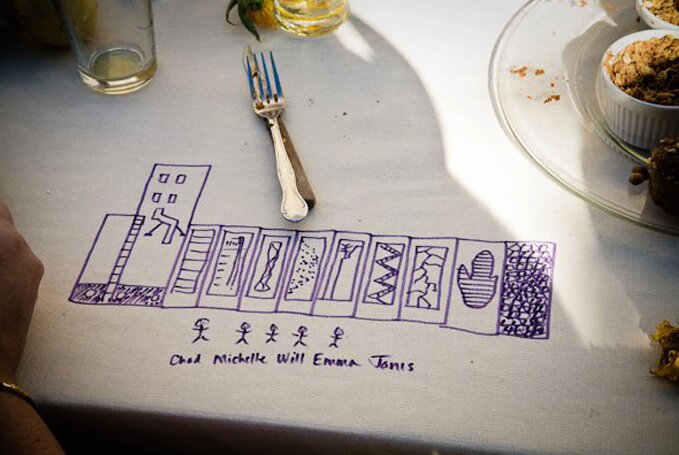
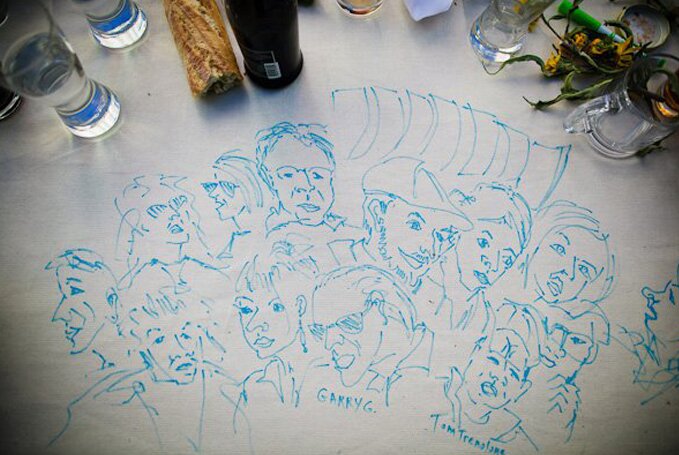
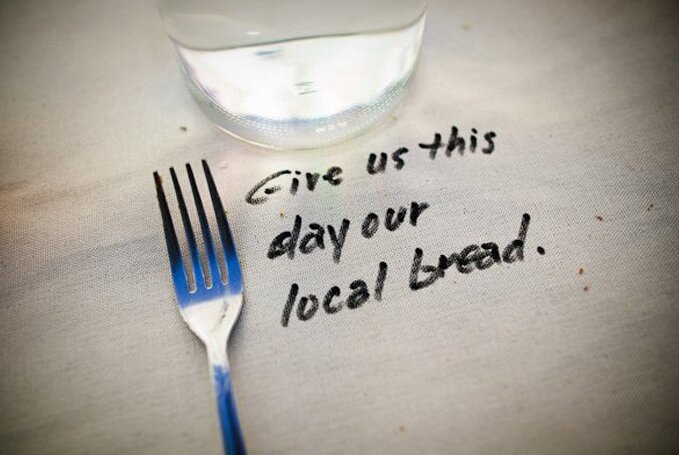
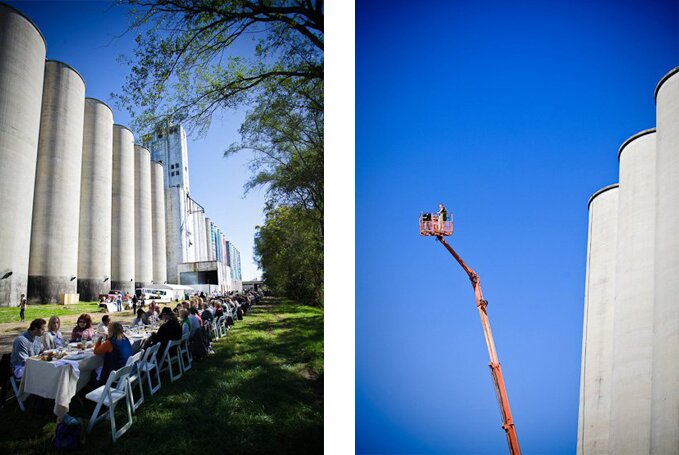
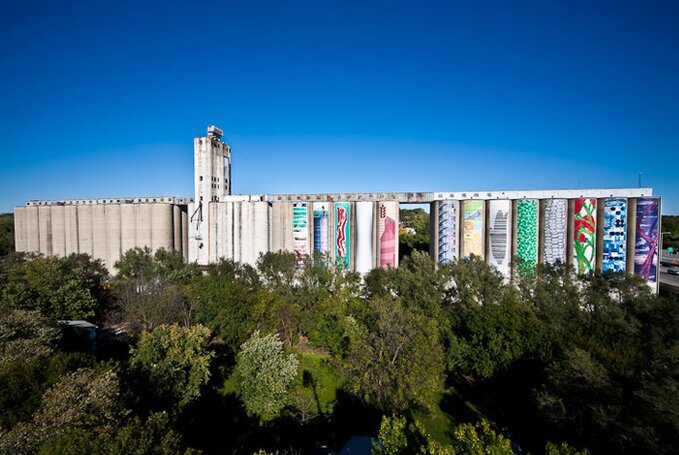

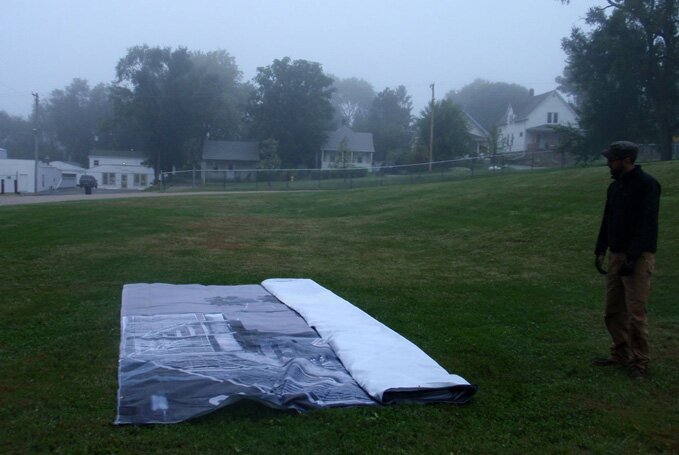
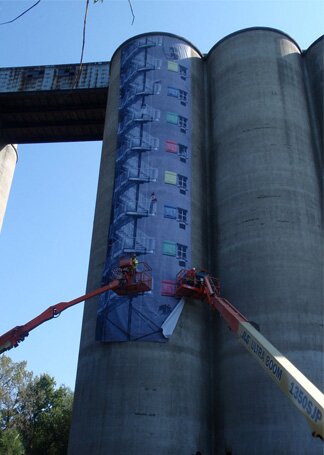 Last week was an intense one that those of us who were on-site at the grain elevator from sunrise to sunset can likely still feel in our bones. The erraticness of fall weather fell upon Omaha, and not even the towering concrete grain elevator could shield us. But 13 giant windsails had to be hung, and the crew of iron workers at Davis Erection were excited to do it. Day One only saw one banner up, while the kinks of hanging such a thing from 110′ in the air were worked out and the afternoon brought 50mph winds. Those of us watching from the ground couldn’t feel the wind, but we could see it as the lift cages smashed up against the silo wall. Even iron workers know when to say No.
Last week was an intense one that those of us who were on-site at the grain elevator from sunrise to sunset can likely still feel in our bones. The erraticness of fall weather fell upon Omaha, and not even the towering concrete grain elevator could shield us. But 13 giant windsails had to be hung, and the crew of iron workers at Davis Erection were excited to do it. Day One only saw one banner up, while the kinks of hanging such a thing from 110′ in the air were worked out and the afternoon brought 50mph winds. Those of us watching from the ground couldn’t feel the wind, but we could see it as the lift cages smashed up against the silo wall. Even iron workers know when to say No.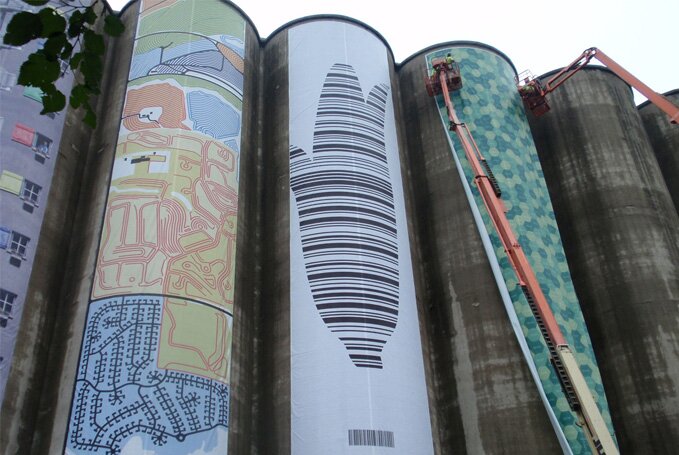
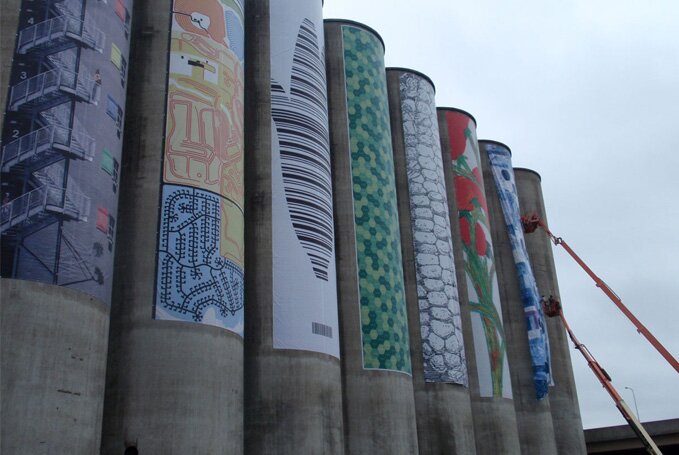
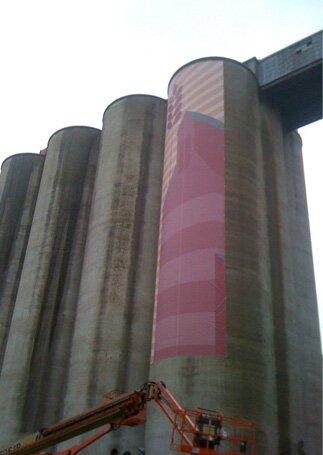 Day Four was a nail biter with wicked wind and rain that the iron workers ignored for long enough to install Drive Shed. It wasn’t pretty and iron workers left soaked to the bone.
Day Four was a nail biter with wicked wind and rain that the iron workers ignored for long enough to install Drive Shed. It wasn’t pretty and iron workers left soaked to the bone.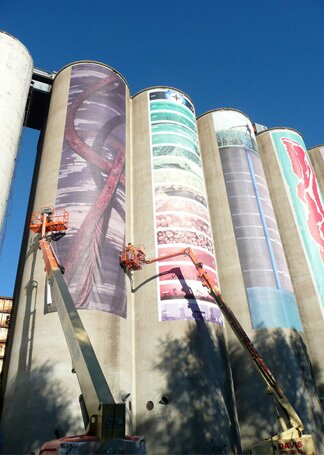 Day Five was a hustle, bringing into existence Hourglass (which has already been redesigned for reprint as the dots were not large enough to convey the illusion of pinching the silo. The one currently hanging will be repurposed into Freitag-like bags for sale to cover the cost of reprint), Bacon, Diminishing Returns and Battery on the north end. After lunch, both lifts moved to the far south silo – the one we’d been ignoring for a whole week – the precarious position next to I-80, open to winds and whirling traffic, and difficult positioning for the lifts operating from the ground. After the lift was stuck in the rain produced mud a couple of times, a resulting hydraulic leak, and winds funneled down the I-80 corridor, iron workers said No again and we moved Cultivator to the northern most silo. We intend to eventually move Cultivator where it belongs – next to I-80 – so the play on scale and infrastructure that it so stunningly creates with I-80 can happen.
Day Five was a hustle, bringing into existence Hourglass (which has already been redesigned for reprint as the dots were not large enough to convey the illusion of pinching the silo. The one currently hanging will be repurposed into Freitag-like bags for sale to cover the cost of reprint), Bacon, Diminishing Returns and Battery on the north end. After lunch, both lifts moved to the far south silo – the one we’d been ignoring for a whole week – the precarious position next to I-80, open to winds and whirling traffic, and difficult positioning for the lifts operating from the ground. After the lift was stuck in the rain produced mud a couple of times, a resulting hydraulic leak, and winds funneled down the I-80 corridor, iron workers said No again and we moved Cultivator to the northern most silo. We intend to eventually move Cultivator where it belongs – next to I-80 – so the play on scale and infrastructure that it so stunningly creates with I-80 can happen.